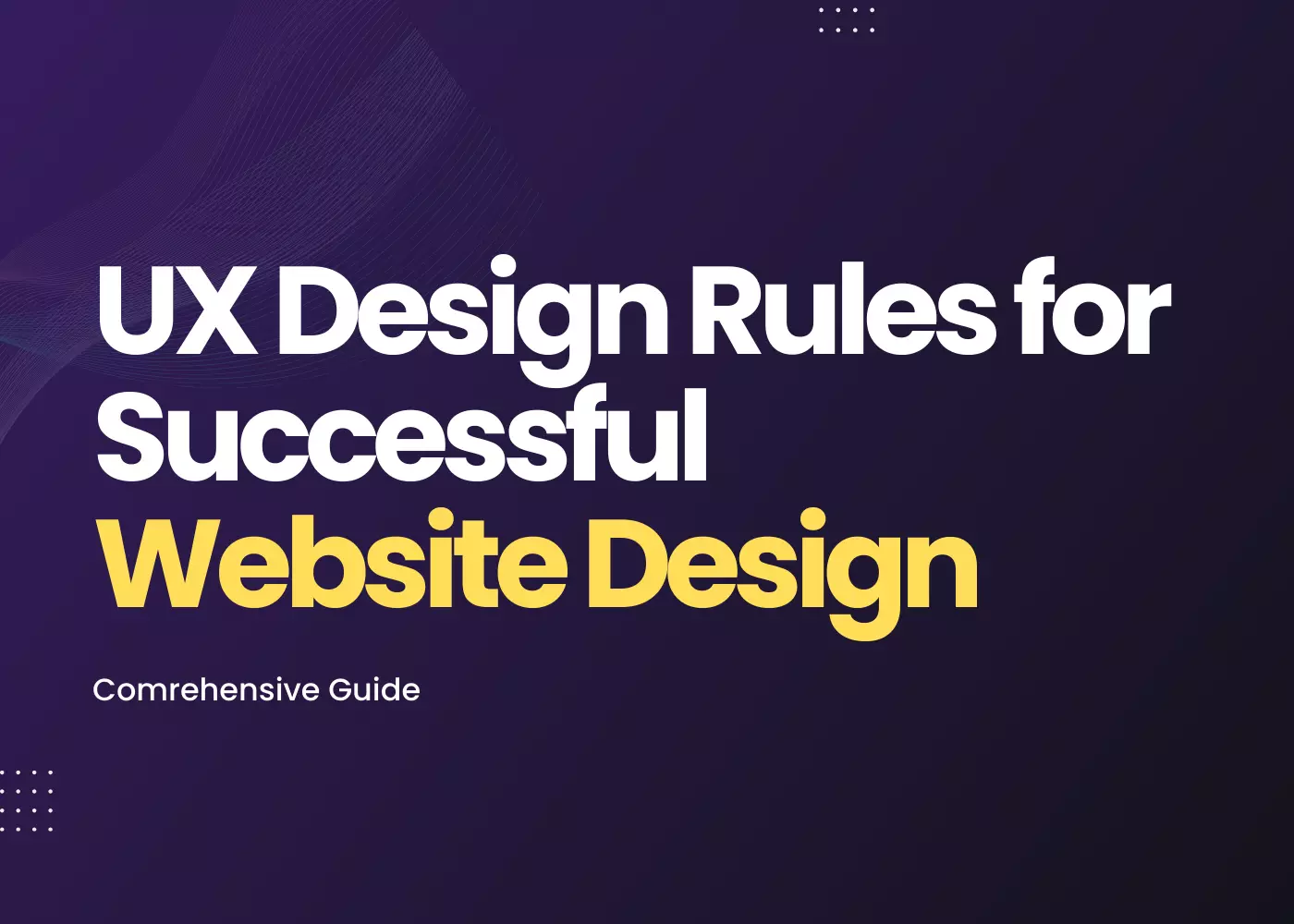
Crafting User-Centered Experiences: UX Design Rules for Successful Website Design
The success of a website in today's digital landscape depends not only on its aesthetics but also on how effectively it serves its users. UX (user experience) principles are crucial for creating intuitive, engaging, and ultimately successful websites.
Essential UX design rules to guide you in creating successful web experiences:
1. User-Centric Design:
- Empathy is Key: The core principle of UX design is empathy for the user. Understand your target audience, their needs, goals, and pain points when using a website. Conduct user research through surveys, interviews, or usability testing to gather valuable insights.
2. Clear Information Architecture:
- Organization Matters: Structure your website's content logically and hierarchically. Users should be able to find the information they seek intuitively, with minimal effort. Utilize clear navigation menus, well-labelled categories, and internal linking to create a seamless browsing experience.
3. Visual Hierarchy and Usability:
- Prioritize Content: Employ visual hierarchy to guide users' attention towards the most important elements on the page. Use a combination of size, colour, contrast, and negative space to create a clear visual flow. Prioritize primary calls to action (CTAs) with prominent buttons and ensure all interactive elements are easily identifiable.
4. Intuitive Navigation:
- Effortless Exploration: Navigation menus should be clear, consistent, and positioned intuitively across all pages. Users should always understand their location within the website structure and be able to navigate to desired sections with minimal clicks. Consider implementing breadcrumb navigation to indicate users' current position within the website hierarchy.
5. Responsive Design:
- Accessibility for All: Ensure your website adapts seamlessly to different screen sizes and devices. With the rise of mobile browsing, a responsive website design is no longer optional. Test your website across various devices (desktops, tablets, smartphones) to identify and address any layout or usability issues on smaller screens.
6. Accessibility for Everyone:
- Inclusive Design: Strive to create an inclusive user experience that caters to users with disabilities. Follow web accessibility guidelines (WCAG) to ensure your website is usable by people with visual, auditory, or motor impairments. This includes features like alt text for images, proper keyboard navigation, and colour contrast considerations.
7. User-Friendly Forms:
- Minimize Friction: Design forms that are clear, concise, and easy to complete. Limit the number of required fields, use clear labels and instructions, and provide appropriate error messages if users input invalid data. Consider implementing progress bars for longer forms to indicate completion status and keep users engaged.
8. Fast Loading Speeds:
- Performance is King: Website loading speed is a crucial factor in user experience. Optimize images, minimize HTTP requests, and leverage caching mechanisms to ensure your website loads quickly on all devices and connection speeds.
9. User Feedback and Iteration:
- Continuous Improvement: Gather user feedback through surveys, analytics data, or A/B testing to identify areas for improvement. Continuously iterate on your website's design based on user feedback and data-driven insights.
10. Content is King (and Queen):
- High-Quality Content: Provide high-quality, valuable, and relevant content that resonates with your target audience. Content should be well-written, informative, and engaging. Optimize your content for search engines (SEO) to improve organic discoverability.
11. Advanced UX Design Techniques:
- Microinteractions: Implement subtle animations or feedback mechanisms (like hover effects or button state changes) to enhance user engagement and clarify interactive elements.
- Progressive Disclosure: Don't overwhelm users with information upfront. Reveal content progressively based on user interactions, such as using accordions or tabs to manage complex information structures.
- User Onboarding: Guide new users through the website's functionalities with interactive tutorials or walkthroughs, especially for complex web applications.
- Personalization: When possible, personalize the user experience by tailoring content or recommendations based on user data or past interactions.
- Error Prevention: Proactively prevent user errors by using clear form validation, providing context-sensitive help, and offering suggestions as users interact with the website.
- Emotional Design: Evoke positive emotions through visual design, content tone, and user interactions to create a memorable and engaging user experience.
12. Building a Strong UX Foundation:
- User Personas: Develop user personas that represent your target audience segments. These personas should detail user demographics, goals, behaviours, and pain points to guide design decisions that cater to their specific needs.
- User Journey Mapping: Map out the user journey for key user personas, outlining the steps they take to achieve their goals on your website. Identify potential pain points and design solutions to address them throughout the user journey.
- Wireframing and Prototyping: Create low-fidelity wireframes to visualize the website's layout and structure before investing time in visual design. Build interactive prototypes to test user flows and gather feedback before final development.
13. Usability Testing and Refinement:
- Usability Testing: Conduct usability testing sessions with real users to observe their interactions with the website and identify any usability issues. Based on the testing results, refine your design to ensure an intuitive and user-friendly experience.
- Analytics Integration: Integrate website analytics tools to track user behaviour, measure engagement metrics, and identify areas for improvement. Use the data to continuously optimize the website's design and functionality based on user behaviour.
14. The Future of UX Design:
- Emerging Technologies: Stay informed about emerging technologies like voice search, chatbots, and augmented reality (AR) that can potentially enhance user experience in the future.
- UX Design for Wearables and Voice Interfaces: As wearable technology and voice-based interactions gain traction, consider how your website's design might need to adapt to cater to these evolving user touchpoints.
Conclusion
Using these UX design rules, you can create websites that are not only visually appealing but also intuitive, user-friendly, and effective. You should always keep your users in mind when developing a website and ensure that the experience is seamless and enjoyable.